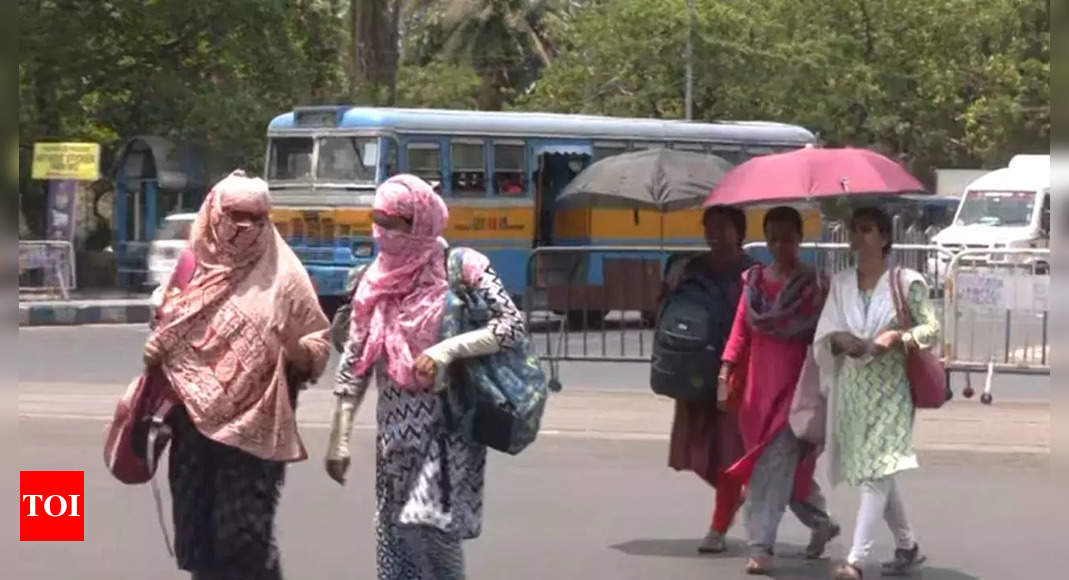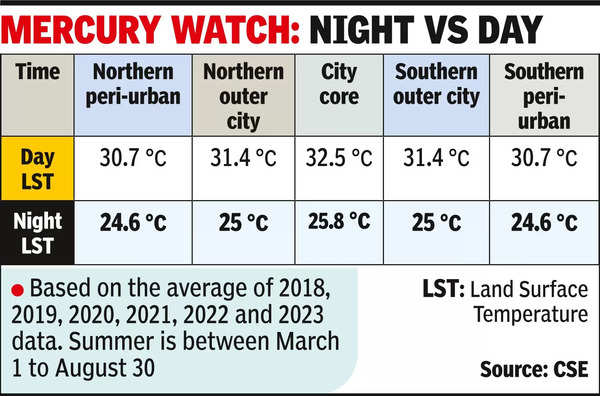
A study by environment NGO Centre for Science & Environment (CSE) has observed that Kolkata is not cooling down at night as it used to during the first decade of the century.“Increase in built-up area, loss of greenery and reduction in water bodies has resulted in Kolkata losing its night-time cooling power,” said Avikal Sombanshi of CSE’s Urban Lab.
Experts say the effect of urban heat islands is stronger at night than during day. A CSE study has found that drop in night-time land surface temperature (LST) is the lowest in core Kolkata areas that extend from Dum Dum in the north to Garia in the south. The average LST between March 1 and Aug 30 for 2018 to 2023 dropped from 32.5°C during the day to 25.8°C at night in the city core, from 31.6°C to 25°C in the outer city and 30.7°C to 24.6°C in periurban areas beyond Singur and Ashok Nagar in the north and Diamond Harbour and Kharagpur in the south.
Rise in built-up area and loss of green cover and water bodies have intensified the urban heat island effect in Kolkata. The city’s built-up area, that stood at 70% of total area in 2001, has increased to 80.1% in 2023, the highest among metros. Consequently, green cover has reduced to 15.2% of total area in 2001 to 14.5% in 2023, the lowest among metros. In the same period, water bodies has decreased from 5.1% of total area to just 1.9%.
‘Heat index in Kolkata higher during monsoon’
A study by environment NGO Centre for Science and Environment (CSE) says urban heat island effect can add up to 2°C to local warming, reducing the adaptive capacity of a city. “The combination of high heat and humidity can compromise the human body’s main cooling mechanism: sweating. The evaporation of sweat from the skin cools our bodies, but higher humidity levels limit the natural cooling. As a result, people can suffer heat stress and illness, and the consequences can be fatal even at much lower temperatures if humidity is so high,” said Avikal Sombanshi.

In the last decade, Kolkata experienced the highest relative humidity among six megacities in India. The city had the highest relative humidity in 2020 and the lowest in 2023, but the ambient air temperature was highest in 2023 at 30.1°C. “The monsoon months are more thermally uncomfortable with their heat index being higher than the pre-monsoon period,” said Ranjneesh Sareen of CSE.
“IMD trend analysis showed evidence of an increase in air moisture content over India during 1969-2007 with more than 90% stations showing increasing trends in specific humidity. Thus the current wave of heat and humidity is in line of the Sixth Assessment Report of Working Group-I (AR6WGI) of IPCC, which says that the frequency and intensity of heat extremes and duration of heat waves have increased since 1950 and this will keep increasing even if global warming stabilises at 1.5°C,” said CSE executive director Anumita Roychowdhury.





